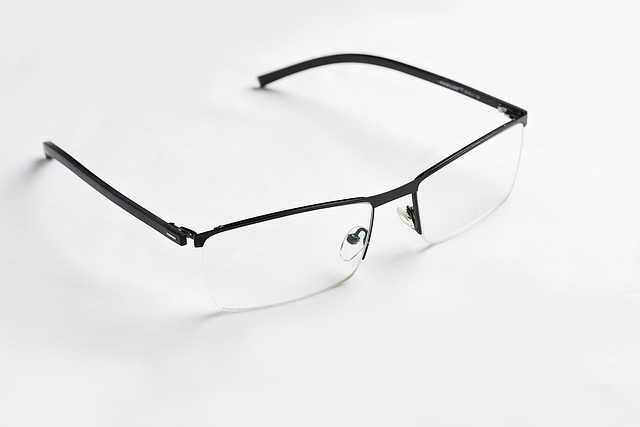Glasses: A Clear View on Vision Correction
Glasses, also known as eyeglasses or spectacles, are optical devices used to correct vision impairments and enhance visual acuity. These ubiquitous accessories have become an integral part of daily life for millions of people worldwide, serving both functional and fashionable purposes. From their humble beginnings as simple magnifying lenses to the sophisticated, technologically advanced eyewear available today, glasses have revolutionized the way we see and interact with the world around us.

The effectiveness of glasses relies on the precise crafting of lenses to match an individual’s prescription. This prescription is determined through a comprehensive eye examination, where an optometrist or ophthalmologist assesses various aspects of visual function, including refractive error, eye muscle balance, and overall eye health.
What are the different types of glasses available?
The world of eyewear offers a diverse array of options to suit various vision needs and personal preferences. Some common types of glasses include:
-
Single vision glasses: These are the most basic and common type, designed to correct one type of vision problem, such as nearsightedness or farsightedness.
-
Bifocals: These lenses feature two distinct optical powers, typically with a visible line separating the distance vision portion at the top from the near vision portion at the bottom.
-
Trifocals: Similar to bifocals, but with three optical powers – for distance, intermediate, and near vision.
-
Progressive lenses: These offer a seamless transition between multiple vision corrections, without visible lines on the lens.
-
Computer glasses: Designed to reduce eye strain and improve visual comfort when using digital devices for extended periods.
-
Reading glasses: Specifically crafted to assist with near vision tasks, such as reading or detailed work.
-
Photochromic lenses: These lenses darken automatically when exposed to sunlight, offering convenience for those who frequently transition between indoor and outdoor environments.
What factors should be considered when choosing glasses?
Selecting the right pair of glasses involves more than just finding a frame that looks good. Several important factors should be taken into account:
-
Prescription accuracy: Ensuring the lenses correctly address your specific vision needs is paramount.
-
Frame material: Options range from lightweight metals like titanium to durable plastics, each offering different benefits in terms of comfort, durability, and style.
-
Lens material: Choices include standard plastic, high-index plastic, polycarbonate, and glass, each with unique properties regarding thickness, weight, and impact resistance.
-
Lens coatings: Anti-reflective, scratch-resistant, and UV-protective coatings can enhance the performance and longevity of your lenses.
-
Face shape and size: The shape and size of your face play a crucial role in determining which frames will be most flattering and comfortable.
-
Lifestyle considerations: Your daily activities, work environment, and hobbies should influence your choice of glasses to ensure they meet your practical needs.
-
Budget: Glasses are available at a wide range of price points, from budget-friendly options to luxury designer brands.
How often should glasses be replaced?
The frequency of replacing glasses depends on several factors, including changes in prescription, wear and tear on frames and lenses, and personal preferences. As a general guideline:
-
Adults with stable vision should have their eyes checked and consider updating their glasses every 1-2 years.
-
Children and teenagers may need more frequent updates due to rapid changes in vision as they grow, potentially requiring new glasses every 6-12 months.
-
If you notice any changes in your vision, such as increased difficulty seeing clearly or experiencing eye strain, it’s advisable to schedule an eye exam regardless of how recently you obtained your current glasses.
-
Physical damage to frames or lenses, such as scratches that impair vision or loose hinges, may necessitate replacement sooner than expected.
What are the latest innovations in eyewear technology?
The field of eyewear is continuously evolving, with new technologies emerging to enhance both function and form. Some recent innovations include:
-
Smart glasses: These incorporate digital displays, cameras, and connectivity features, blending the worlds of eyewear and wearable technology.
-
3D-printed frames: Custom-fit frames created using advanced 3D printing techniques offer unprecedented levels of personalization.
-
Blue light filtering lenses: Designed to reduce exposure to potentially harmful blue light emitted by digital devices, these lenses aim to alleviate eye strain and improve sleep quality.
-
Adaptive focus lenses: Electronic lenses that can automatically adjust their focus based on where the wearer is looking, offering a more natural vision experience across different distances.
-
Sustainable materials: Eco-friendly frame options made from recycled plastics, bio-based materials, or sustainable wood are gaining popularity among environmentally conscious consumers.
Glasses have come a long way from their humble origins, evolving into sophisticated devices that not only correct vision but also enhance our overall quality of life. As technology continues to advance, we can expect even more exciting developments in the world of eyewear, further blurring the lines between function, fashion, and cutting-edge innovation.






